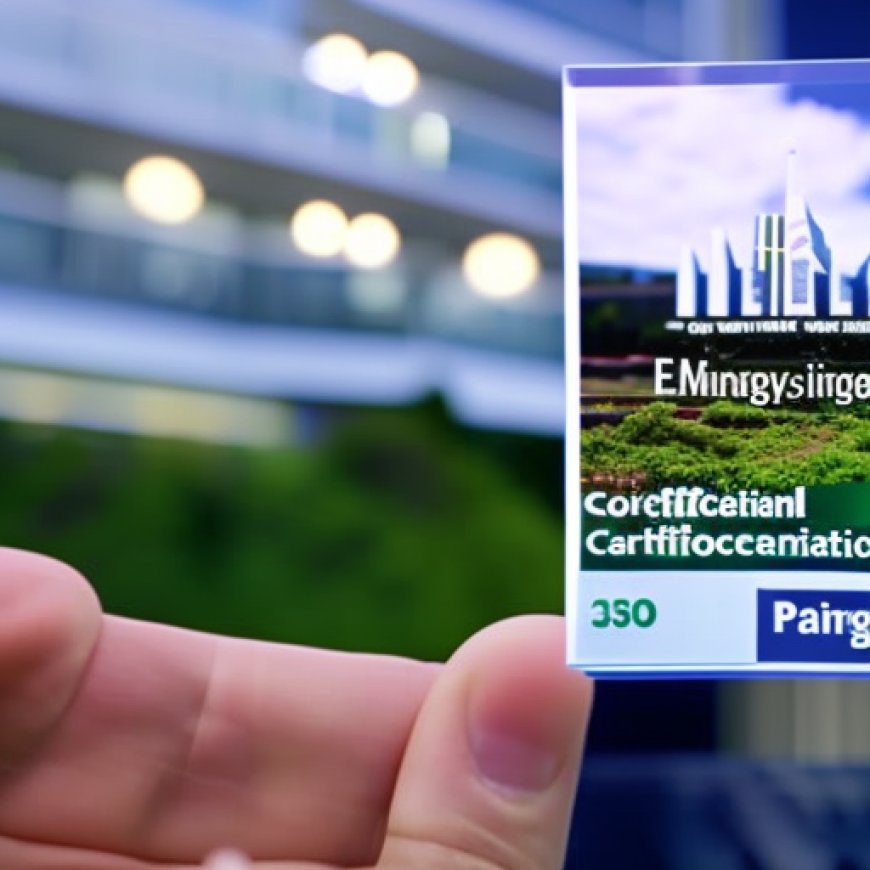EPA Launches ENERGY STAR NextGen Certification for Residential Buildings — Environmental Protection
EPA Launches ENERGY STAR NextGen Certification for Residential Buildings EP Magazine



EPA Launches ENERGY STAR NextGen Certification for Residential Buildings
The program aims to revolutionize energy efficiency in residential buildings.
Sustainable Development Goals (SDGs)
- Goal 7: Affordable and Clean Energy
- Goal 11: Sustainable Cities and Communities
- Goal 13: Climate Action
EPA Launches ENERGY STAR NextGen Certification for Residential Buildings
The U.S. Environmental Protection Agency (EPA) has unveiled the ENERGY STAR NextGen Certified Homes and Apartments program. This initiative aims to enhance energy efficiency in new residential constructions nationwide. According to a recent release, the program—funded through President Biden’s Inflation Reduction Act—looks to boost energy savings and curb emissions by promoting the adoption of advanced technologies within the building sector.
Program Objectives
- Promote energy efficiency in residential buildings
- Reduce greenhouse gas emissions
- Encourage the adoption of advanced technologies
EPA Administrator’s Statement
“President Biden’s Inflation Reduction Act is addressing climate challenges head-on and accelerating the adoption of clean, affordable technologies,” EPA Administrator Michael S. Regan said in a statement. “By collaborating with developers and home builders nationwide, ENERGY STAR NextGen is set to act as a catalyst for the construction of new, energy-efficient homes and apartment buildings. Strategic partnerships like this are not just cutting costs for American families and greenhouse gas emissions. They’re paving the way for a clean energy future for current and future generations.”
Key Features of ENERGY STAR NextGen Certification
- Equips residences with energy efficiency features such as heat pumps, heat pump water heaters, and electric cooking appliances
- Endorses the inclusion of residential electric vehicle charging infrastructure
- Projected to make homes 20 percent more efficient than typical code-level constructions
- Contributes to a substantial reduction in greenhouse gas emissions
Early Adopters
Early adopters of the ENERGY STAR NextGen specification include Beazer Homes in Maryland, GreenSmith Builders in Minnesota, New Tradition Homes and Quantum Equities, LLC in Washington, and Thrive Home Builders in Colorado. Furthermore, various utilities have announced initial incentives to encourage builders to adhere to the certification criteria.
Learn More
To learn more about the ENERGY STAR NextGen certification, visit the official website.
About the Author
Robert Yaniz Jr. is the Content Editor for Environmental Protection.
SDGs, Targets, and Indicators Analysis
1. Which SDGs are addressed or connected to the issues highlighted in the article?
- SDG 7: Affordable and Clean Energy
- SDG 11: Sustainable Cities and Communities
- SDG 13: Climate Action
The article discusses the launch of the ENERGY STAR NextGen Certification program, which aims to enhance energy efficiency in residential buildings. This directly aligns with SDG 7, which focuses on ensuring access to affordable, reliable, sustainable, and modern energy for all. Additionally, by promoting the adoption of advanced technologies and reducing greenhouse gas emissions, the program contributes to SDG 11, which aims to make cities and human settlements inclusive, safe, resilient, and sustainable. Lastly, addressing energy efficiency and reducing emissions also supports SDG 13, which targets climate action.
2. What specific targets under those SDGs can be identified based on the article’s content?
- SDG 7.3: By 2030, double the global rate of improvement in energy efficiency.
- SDG 11.6: By 2030, reduce the adverse per capita environmental impact of cities, including by paying special attention to air quality and municipal and other waste management.
- SDG 13.2: Integrate climate change measures into national policies, strategies, and planning.
The ENERGY STAR NextGen Certification program aims to improve energy efficiency in residential buildings, contributing to SDG 7.3’s target of doubling the global rate of improvement in energy efficiency by 2030. By promoting the adoption of advanced technologies and reducing greenhouse gas emissions, the program also aligns with SDG 11.6’s target of reducing the adverse environmental impact of cities. Additionally, addressing energy efficiency and reducing emissions supports SDG 13.2’s target of integrating climate change measures into national policies and planning.
3. Are there any indicators mentioned or implied in the article that can be used to measure progress towards the identified targets?
- Energy savings in residential buildings
- Reduction in greenhouse gas emissions
- Number of new residential constructions meeting ENERGY STAR NextGen certification criteria
The article mentions that homes meeting the ENERGY STAR NextGen certification standard are projected to be 20 percent more efficient than typical code-level constructions and contribute to a substantial reduction in greenhouse gas emissions. These indicators can be used to measure progress towards the targets of improving energy efficiency (SDG 7.3), reducing environmental impact (SDG 11.6), and integrating climate change measures (SDG 13.2).
SDGs, Targets, and Indicators Table
| SDGs | Targets | Indicators |
|---|---|---|
| SDG 7: Affordable and Clean Energy | 7.3: By 2030, double the global rate of improvement in energy efficiency. | – Energy savings in residential buildings |
| SDG 11: Sustainable Cities and Communities | 11.6: By 2030, reduce the adverse per capita environmental impact of cities, including by paying special attention to air quality and municipal and other waste management. | – Reduction in greenhouse gas emissions – Number of new residential constructions meeting ENERGY STAR NextGen certification criteria |
| SDG 13: Climate Action | 13.2: Integrate climate change measures into national policies, strategies, and planning. | – Reduction in greenhouse gas emissions – Number of new residential constructions meeting ENERGY STAR NextGen certification criteria |
Copyright: Dive into this article, curated with care by SDG Investors Inc. Our advanced AI technology searches through vast amounts of data to spotlight how we are all moving forward with the Sustainable Development Goals. While we own the rights to this content, we invite you to share it to help spread knowledge and spark action on the SDGs.
Fuente: eponline.com

Join us, as fellow seekers of change, on a transformative journey at https://sdgtalks.ai/welcome, where you can become a member and actively contribute to shaping a brighter future.







